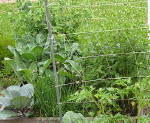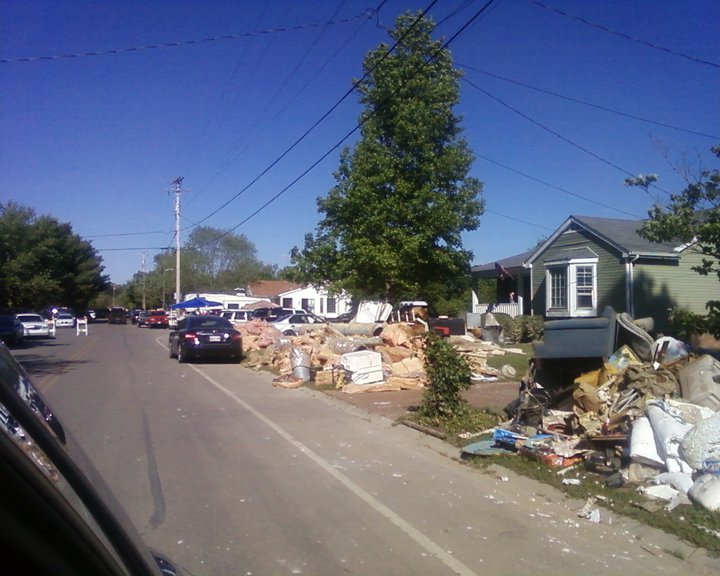Search
Latest topics
» N & C Midwest: Nov. Dec. 2024by OhioGardener Today at 14:06
» Cooked worms?
by KiwiSFGnewbie Today at 13:56
» Tree roots, yeeessss.....
by KiwiSFGnewbie Yesterday at 21:17
» New SFG gardener in Auckland
by KiwiSFGnewbie Yesterday at 20:25
» Kiwi's SFG Adventure
by KiwiSFGnewbie 2024-11-12, 16:10
» Thanksgiving Cactus
by OhioGardener 2024-11-12, 14:40
» Happy Birthday!!
by sanderson 2024-11-11, 08:57
» Need Garden Layout Feedback
by markqz 2024-11-09, 18:16
» Thai Basil
by Scorpio Rising 2024-11-08, 17:52
» How best to keep a fallow SFG bed
by KiwiSFGnewbie 2024-11-08, 17:11
» Preserving A Bumper Tomato Harvest with Freezing vs Canning
by plantoid 2024-11-07, 08:36
» Mark's first SFG
by sanderson 2024-11-06, 20:51
» What Have You Picked From Your Garden Today
by OhioGardener 2024-11-05, 11:29
» Greetings from Southeastern Wisconsin
by sanderson 2024-11-05, 11:01
» Spinning Compost Bin-need some ideas
by rtfm 2024-11-02, 16:49
» Growing fruit trees in Auckland
by OhioGardener 2024-10-31, 13:23
» Vermiculite -- shipping sale through 10/31/2024
by markqz 2024-10-30, 11:27
» N & C Midwest: October 2024
by Scorpio Rising 2024-10-30, 07:38
» What are you eating from your garden today?
by Scorpio Rising 2024-10-27, 19:27
» Old Mulch and Closing Beds for Winter
by sanderson 2024-10-26, 20:00
» Ohio Gardener's Greenhouse
by OhioGardener 2024-10-25, 16:17
» Hello from Land of Umpqua, Oregon Zone 8b
by sanderson 2024-10-25, 12:14
» Hello everyone!
by SFGHQSTAFF 2024-10-24, 12:22
» Senior Gardeners
by sanderson 2024-10-23, 15:09
» Hello from South Florida
by markqz 2024-10-23, 07:30
» Confirm what this is
by sanderson 2024-10-11, 11:51
» Harlequin Beetles?
by sanderson 2024-10-07, 12:08
» N & C Midwest: September 2024
by OhioGardener 2024-09-30, 13:13
» The SFG Journey-Biowash
by OhioGardener 2024-09-29, 05:33
» Fall is For Garlic Planting
by Scorpio Rising 2024-09-27, 21:19
Google
A trip to the nature park's garden
+2
sanderson
Razed Bed
6 posters
Page 1 of 1
 A trip to the nature park's garden
A trip to the nature park's garden
This post is directed at those of you like me who live in climates where the summer is no picnic. As I watch my garden shrink daily due to heat, I have begun to rethink how home gardens might do better under different conditions from the norm.
Today, I decided to go hike the nature trails at a park near my home. It is totally shade-covered 90-95% of the time, and part of the trail is historic in nature, as it is the original old Natchez Trace that goes back to the 18th Century.
This park has a demonstration garden on its properties. It is not SFG raised bed, nor is it square foot. However, it uses a soil-free growing medium and grows according to the "Lasagna Method," which isn't that much different than the SFG raised bed. The Lasagna method starts from the ground and builds up into berms with organic matter.
The park's garden contains composts wood chips from recycling of trees that have been placed through the grinder by the city's public works department. It includes compost made at the park, decayed leaves, and other things that I could not identify. It is built up into about an 18-inch berm.
They do not fertilize, but they do add compost through the season. They have a water hose and do water when the rain is not sufficient, and the garden is 100% organic and biodynamic.
None of this has the first thing to do with my newly developing paradigm. What struck me today was how much this garden is flourishing! Why is it doing so well? My hypothesis is that the park supplies a lot of shade. The full-sun crops do not seem to be harmed by the limited sunlight. They do not burn, and the growing medium does not dry out quickly.
I talked to the nature officer. She told me that the garden gets about 3 hours sun early in the morning when the sun rises and then gets another 3 hours in the afternoon before it sets over the hills to the Southwest.
Could it be that we who grow in triple-digit heat need to re-evaluate the sun factor? I wish we still had the old oak tree that used to shade our yard. A strong thunderstorm removed that nice tree about 10 years ago.
This brings back the shade cloth idea that a lot of forum members have. It is too late this year to see what might happen, but I am going to experiment with permanent shade in some form or fashion next season if I get around to figuring out how I can simulate enough shade to limit my sunshine to 3 hours in the morning and 3 hours in the afternoon.
What do you think?
Today, I decided to go hike the nature trails at a park near my home. It is totally shade-covered 90-95% of the time, and part of the trail is historic in nature, as it is the original old Natchez Trace that goes back to the 18th Century.
This park has a demonstration garden on its properties. It is not SFG raised bed, nor is it square foot. However, it uses a soil-free growing medium and grows according to the "Lasagna Method," which isn't that much different than the SFG raised bed. The Lasagna method starts from the ground and builds up into berms with organic matter.
The park's garden contains composts wood chips from recycling of trees that have been placed through the grinder by the city's public works department. It includes compost made at the park, decayed leaves, and other things that I could not identify. It is built up into about an 18-inch berm.
They do not fertilize, but they do add compost through the season. They have a water hose and do water when the rain is not sufficient, and the garden is 100% organic and biodynamic.
None of this has the first thing to do with my newly developing paradigm. What struck me today was how much this garden is flourishing! Why is it doing so well? My hypothesis is that the park supplies a lot of shade. The full-sun crops do not seem to be harmed by the limited sunlight. They do not burn, and the growing medium does not dry out quickly.
I talked to the nature officer. She told me that the garden gets about 3 hours sun early in the morning when the sun rises and then gets another 3 hours in the afternoon before it sets over the hills to the Southwest.
Could it be that we who grow in triple-digit heat need to re-evaluate the sun factor? I wish we still had the old oak tree that used to shade our yard. A strong thunderstorm removed that nice tree about 10 years ago.
This brings back the shade cloth idea that a lot of forum members have. It is too late this year to see what might happen, but I am going to experiment with permanent shade in some form or fashion next season if I get around to figuring out how I can simulate enough shade to limit my sunshine to 3 hours in the morning and 3 hours in the afternoon.
What do you think?

Razed Bed-
 Posts : 243
Posts : 243
Join date : 2015-04-01
Location : Zone 7
 Re: A trip to the nature park's garden
Re: A trip to the nature park's garden
Here in California, I try to shade where I can from noon - 1 PM on. That leaves 6-7 hours from sunrise. The afternoon and early evenings are killers. Your shade experiment could open up more growing area for those with limited sunny spots if it works. The great thing about gardening is the optimism of the next year.
 Re: A trip to the nature park's garden
Re: A trip to the nature park's garden
It sounds like the park is using a variation of the BTE method. Hope to get to the mountains in the next few weeks for the cooler weather. I replanted tomatoes because mine did not do well this time. I had more plants than squares available, so I put one in a bucket. It is sitting under a river birch tree and is doing fine there. Looks better than the ones in direct sun. We are having upper 90's to 100 degree days this week. This heat is too much for just about everything.

VJ72584-
 Posts : 100
Posts : 100
Join date : 2012-01-28
Location : Darlington SC
 Re: A trip to the nature park's garden
Re: A trip to the nature park's garden
I live in an area that is generally not prone to what you are experiencing. This year I made the mistake of putting the eggplant and green peppers in an area (south of the house) that gets sun all day. We, in Minnesota, have had lots of rains but also some hot days. They are just now blooming and the height of the plants is about 1/2 of what they usually are. Last year when I planted these same veggies on the east side where it gets far less hours of sun, it did produce very well. The plants were nice.
My east side garden is amazing - huge beets, carrots and parsnips and kohlrabi. The brussel sprouts and cabbage plants are not making heads yet but the leaves are lush. Lots of toms. (still green) I am moving the south garden after harvest, due to a landscaping issue, so the replacement will also be on the east side.
Razed Bed, even though I don't live in your area, I totally agree with your deductions.
My east side garden is amazing - huge beets, carrots and parsnips and kohlrabi. The brussel sprouts and cabbage plants are not making heads yet but the leaves are lush. Lots of toms. (still green) I am moving the south garden after harvest, due to a landscaping issue, so the replacement will also be on the east side.
Razed Bed, even though I don't live in your area, I totally agree with your deductions.

greatgranny-
 Posts : 661
Posts : 661
Join date : 2012-05-25
Location : Central Minnesota - Zone 4
 Re: A trip to the nature park's garden
Re: A trip to the nature park's garden
When it rains, it pours. No 100-degree day today. It hasn't even made it past 80 since early this morning, but in its place, we had strong storms with heavy winds, hail, and floods. Floods here are a scary event these days. 5 years ago, we had catastrophic floods with damage that will never be fully repaired. Just across the way from us, dozens of houses were underwater, and a horse farm with horses that had to be rescued in heroic fashion.

One week later


One week later


Razed Bed-
 Posts : 243
Posts : 243
Join date : 2015-04-01
Location : Zone 7
 Re: A trip to the nature park's garden
Re: A trip to the nature park's garden
How awful. Floods are worse than anything I have ever had to clean up. Hope the people get some help to recover from this.

greatgranny-
 Posts : 661
Posts : 661
Join date : 2012-05-25
Location : Central Minnesota - Zone 4
 Re: A trip to the nature park's garden
Re: A trip to the nature park's garden
Crops like tomatoes are supposed to like full sun all day long, that being the heritage of their ancestors in the lands of their origin. But it doesn't always work out that way to our benefit: tomatoes in terrific heat may come back from it but not thrive, and may thrive but only in the sense of putting out more greenery, rather than setting a lot of fruit. Heat can nourish but also hurt or even kill plants, and most plants aren't the type to take excessive heat for long without some setbacks.
One of my most productive plants and planting situations involves an area that gets sun only part of the day. In an area that gets primarily morning sun, for two years I planted a Better Bush determinate tomato. It has produced flush after flush of healthy and good-tasting fruit even though tomatoes typically like more sun, and even though bush tomatoes typically produce the majority of their crop at once.
Other plants that I've read love the sun and need only weekly or bi-weekly watering ... I've seen become stunted or die in as little as a day of high heat. My beans in direct sun all day suffer, but the ones that get only partially-shaded or full afternoon sun thrive.
The ideal is probably something between the extremes, as usual. Not no sun, but plenty of sun; not super-hot temperatures, but hot or warm temperatures; not 12 or 14 hours of sun a day, but 6 or 8 or 10. Unfortunately, few of us have that kind of control over our gardens. The people who grow better lettuce than I do may not grow as good tomatoes; we just have to adapt, and there are things we may have to do without entirely even as our neighbor grows them successfully.
It's good you're keeping an open mind regarding how very specific your garden and its particular plants are. There is a world of instruction out there that is very general but sounds authoritative, and may even be presented as if it were universal and readily applicable. The truth is that it every garden is particular rather than general, and it takes paying attention over a number of years to discover a plot of land's individual, peculiar secrets and begin to turn them to one's advantage. I know people who grow lettuce in the hottest part of summer and others who eat tomatoes until snowfall. It's wonderful to truly explore one's land on a deep level and see what it is capable of giving. Good luck on finding out more about the way others are growing and adapting it to your own very particular circumstances. I used to fear giving plants more or less of something recommended as vital, like how many hours of sunlight they need; now I try to watch carefully and learn, and am prepared to be pleasantly surprised.
One of my most productive plants and planting situations involves an area that gets sun only part of the day. In an area that gets primarily morning sun, for two years I planted a Better Bush determinate tomato. It has produced flush after flush of healthy and good-tasting fruit even though tomatoes typically like more sun, and even though bush tomatoes typically produce the majority of their crop at once.
Other plants that I've read love the sun and need only weekly or bi-weekly watering ... I've seen become stunted or die in as little as a day of high heat. My beans in direct sun all day suffer, but the ones that get only partially-shaded or full afternoon sun thrive.
The ideal is probably something between the extremes, as usual. Not no sun, but plenty of sun; not super-hot temperatures, but hot or warm temperatures; not 12 or 14 hours of sun a day, but 6 or 8 or 10. Unfortunately, few of us have that kind of control over our gardens. The people who grow better lettuce than I do may not grow as good tomatoes; we just have to adapt, and there are things we may have to do without entirely even as our neighbor grows them successfully.
It's good you're keeping an open mind regarding how very specific your garden and its particular plants are. There is a world of instruction out there that is very general but sounds authoritative, and may even be presented as if it were universal and readily applicable. The truth is that it every garden is particular rather than general, and it takes paying attention over a number of years to discover a plot of land's individual, peculiar secrets and begin to turn them to one's advantage. I know people who grow lettuce in the hottest part of summer and others who eat tomatoes until snowfall. It's wonderful to truly explore one's land on a deep level and see what it is capable of giving. Good luck on finding out more about the way others are growing and adapting it to your own very particular circumstances. I used to fear giving plants more or less of something recommended as vital, like how many hours of sunlight they need; now I try to watch carefully and learn, and am prepared to be pleasantly surprised.

Marc Iverson-
 Posts : 3637
Posts : 3637
Join date : 2013-07-05
Age : 63
Location : SW Oregon
 Re: A trip to the nature park's garden
Re: A trip to the nature park's garden
Marc, down right poetic. My secret (veggie) garden. 
It's good you're keeping an open mind regarding how very specific your garden and its particular plants are. There is a world of instruction out there that is very general but sounds authoritative, and may even be presented as if it were universal and readily applicable. The truth is that it every garden is particular rather than general, and it takes paying attention over a number of years to discover a plot of land's individual, peculiar secrets and begin to turn them to one's advantage.
 Re: A trip to the nature park's garden
Re: A trip to the nature park's garden
I am discovering the exact same thing in my gardens. Our sun is brutal. I have tremendously productive squash plants all over the place, but the two that look the best and are producing really well are in shaded locations.
One is east side and gets only morning sun, it's a yellow straight squash. The other are two acorn squash growing in a table top that is shaded until afternoon. It gets filtered light and there is a sheer cloth over it for the worst of the mid-day sun, then gets all afternoon and evening.
I am growing a second year rhubarb that isn't supposed to be able to grow in our region because of the heat, but because it gets morning sun only it's thriving.
I loved your post Marc, it says it all
One is east side and gets only morning sun, it's a yellow straight squash. The other are two acorn squash growing in a table top that is shaded until afternoon. It gets filtered light and there is a sheer cloth over it for the worst of the mid-day sun, then gets all afternoon and evening.
I am growing a second year rhubarb that isn't supposed to be able to grow in our region because of the heat, but because it gets morning sun only it's thriving.
I loved your post Marc, it says it all
 Similar topics
Similar topics» Three Years Later Project
» Have to leave another garden - and potato road trip
» Seriously mother nature!
» Nature vs All-out war?
» My Trip to the Alpaca Ranch
» Have to leave another garden - and potato road trip
» Seriously mother nature!
» Nature vs All-out war?
» My Trip to the Alpaca Ranch
Page 1 of 1
Permissions in this forum:
You cannot reply to topics in this forum









